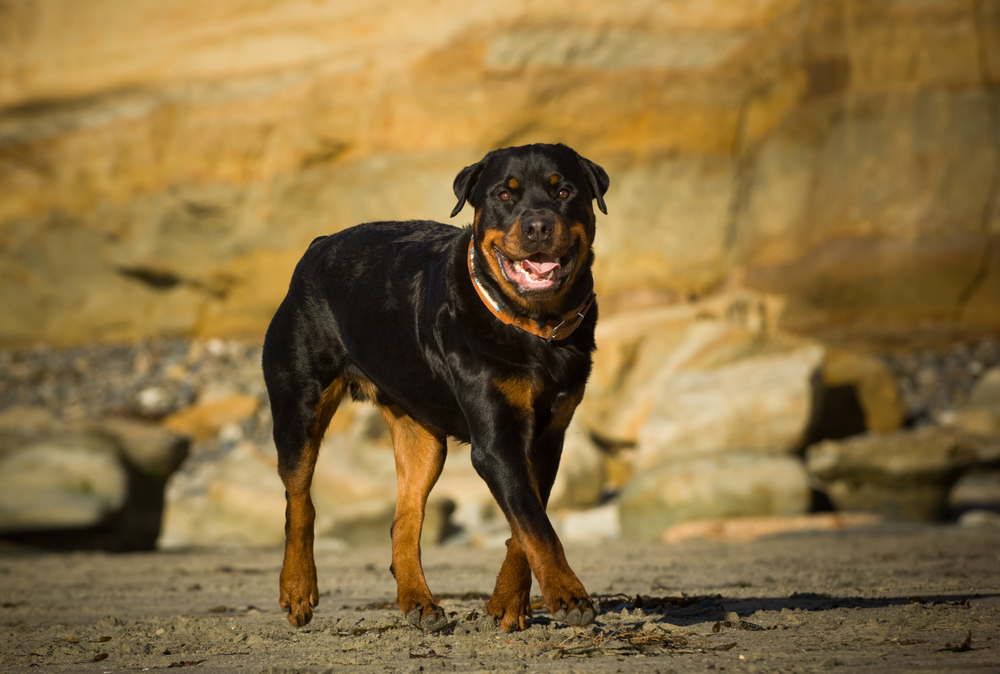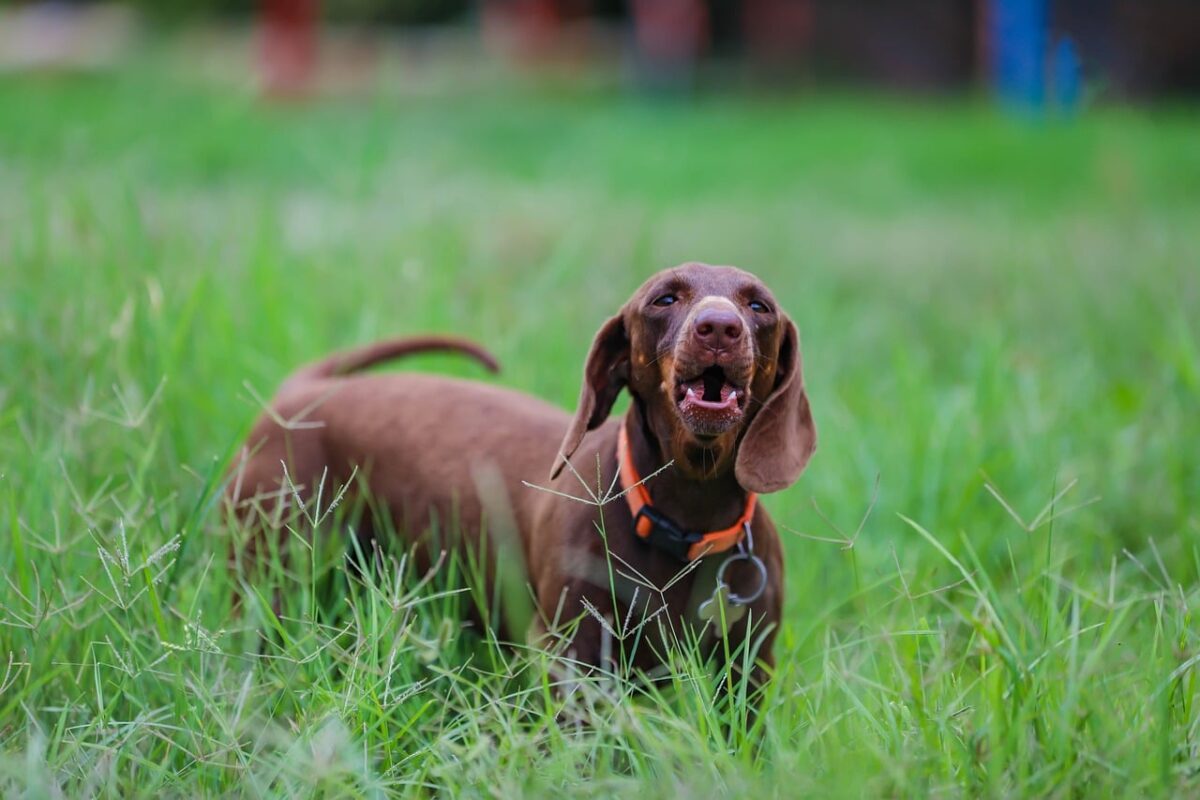
The information is current and up-to-date in accordance with the latest veterinarian research.
Learn more »
Rottweilers get a bad rap, but the truth is these canines can make fantastic companions for the right dog owner. However, this breed is large, so before adopting a Rottweiler, you should be aware of exactly how big they can get to see if you have enough room and physical capacity for one. You should also know when they’re supposed to reach their full size so you can ensure your Rottweiler puppy is hitting all their size and weight goals as they grow.
That’s why we’re here with all the information you need to keep track of your four-legged friend’s weight in one handy chart! We’ll also look at what factors can affect how large a Rottweiler becomes, how to measure your dog, and more. Keep reading to find out how you can tell whether your Rottweiler is growing properly!
Rottweiler Breed Overview
Rottweilers, or Rotties, descend from mastiffs that were found in the Roman Empire. Their ancestors began as working dogs, specifically herding dogs, but were soon turned into guard dogs due to their natural protectiveness. The breed still makes excellent guard dogs today due to this protective nature and their loyalty.
These pups are so much more than guardians, though! To their families, they’re known as silly, laidback, goofy clowns who are hopelessly devoted to their humans and eager to please. With proper training and socialization you could have a well-adjusted, loyal companion in a Rottweiler.
Image Credit: Phillip van Zyl, Shutterstock
Rottweiler Size and Growth Chart
This growth and weight chart provides Rottweilers’ standard weights as they grow but keep in mind around 5% of dogs will fall outside of a normal growth curve due to biological variation. Many variables can affect a Rottweiler puppy’s development, such as sex, health issues, and genetics. So, if you believe your Rottweiler is growing too quickly or slowly compared to the standards on this chart, it is a good idea to speak with your pet’s vet to see if there is cause for concern.
💛 🐶 Speak To a Vet Online From the Comfort of Your Couch!
If you need to speak with a vet but can’t get to one, head over to PangoVet. It’s an online service where you can talk to a vet online and get the personalized advice you need for your pet — all at an affordable price!
The chart is not the be-all and end-all as your pup could actually be underweight but fall into the correct weight range if they have a larger frame. This is why you must take body condition score into account alongside their actual weight.
Age
Weight Range
8 weeks
12–20 lbs
3 months
26–39 lbs
4 months
35–50 lbs
6 months
48–85 lbs
9 months
68–110 lbs
1 year
74–130 lbs
2 years
80–135 lbs
When Does a Rottweiler Stop Growing?
Rottweilers are a large breed, so they mature more slowly than smaller-breed canines. As such, they won’t fully stop growing until somewhere between 18 months and 2 years of age. They should reach very close to full height by the one-year mark, but they’ll continue to put on weight for the next year or so. After reaching 2 years of age, even the latest bloomers should have reached their final weight and should only gain further weight if they’re overeating, have a health condition that affects weight or are not getting enough daily exercise.
Image Credit: Olga Maksimava, Shutterstock
Factors Affecting the Size of Rottweiler
Genetics plays the largest role in how big a Rottweiler will get. The size of their parents should give you a rough idea of where your dog will end up. However, there are other variables that can affect a Rottweiler’s size. What are these factors?
Another factor that plays a significant role in the size of a Rottweiler is their diet and nutrition. Canines who receive the proper nutrition during their puppy years (particularly the first year of their life) should grow perfectly normally. But if a dog is missing out on nutrients during these vital years, they could end up being undersized.
A Rottweiler’s sex also plays into how large they will end up being. Males will almost always be larger than females, and in the case of the Rottweiler, that could be a bit of difference, at least in weight. As far as length, Rottweilers shouldn’t end up being too much longer than females.
A dog’s breeding history could also come into play. A Rottweiler who hasn’t been bred to meet the official breed standards could also end up being a different size than is the norm. Ideally parents should be screened for common health complaints to ensure they aren’t passing these on to their pups. For example, heart issues are common and can lead to stunted growth.
Finally, parasites and other diseases can affect your dog’s growth, particularly if the disease impacts nutrient absorption from the gut. As you can see, though genetics are important in determining a Rottweiler’s size, many other factors can affect it!
Ideal Diet for Maintaining a Healthy Weight
Because Rottweilers are a larger breed, they can be prone to obesity, especially if they are under-exercised or overfed. So, it’s important to look at feeding guides and speak with your vet about how much your dog should consume daily, as every dog’s required caloric intake will be based on their weight, age, activity level, and more. Any food you give your pup should ideally contain 22.5% or more protein from a high-quality, whole protein source.
Rottie puppies should be fed a high-quality diet designed specifically for large breed puppies. These diets should have moderated calcium and calories to support healthy growth of the joints. Overfeeding calories and calcium to Rottweiler puppies can lead to bone problems.
Image Credit: YouraPechkin, Shutterstock
How to Measure Your Rottweiler
The most challenging part of measuring your Rottweiler will be getting them to stay still while you do so! There is a standard way for measuring canines that involves measuring from where the dog’s feet touch the ground to the highest point of their shoulder blade. So, all you need to do is grab some measuring tape, get your pet to stand still next to a wall, and measure from those two points to determine how tall your Rottie is.
To figure out how long your Rottweiler is, simply measure along the spine or from the base of their neck to the base of their tail.
Conclusion
With this growth chart, you now know what to expect when it comes to your Rottweiler’s weight during the first couple of years of their life. Knowing the standard milestones your pup should be hitting for their breed will help you guarantee that your four-legged friend is growing up exactly as they should. If it seems like your dog is behind or ahead of where they should be when it comes to growth, consider speaking with your vet to determine what the cause could be, as many variables can affect a dog’s development.
Most of all, though, don’t forget to enjoy your Rottie as they grow up!
Featured Image Credit: everydoghasastory, Shutterstock






